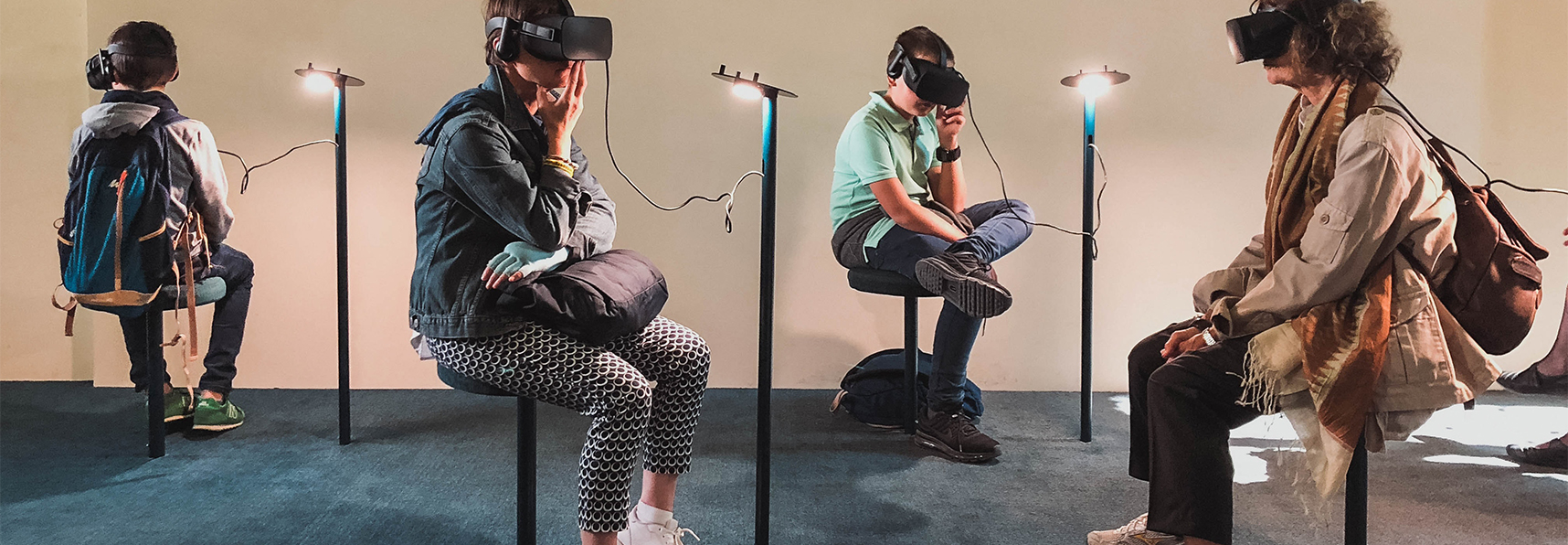AR/VR and Now XR: A New Wave of Digital Marketing

Necessity has been the engine of change throughout the duration of the COVID-19 crisis. As metaverse hype follows the return to in-person activity, and digital engagements seem to be here to stay, marketing teams are back to the drawing board, and have quickly began enacting new and necessary techniques.
Traditional marketing has met its match; the tools and technologies that were designed to get people into stores, to pique enough interest to bring the consumer into an in-person shopping experience, now have to be completely rethought.
It hasn’t taken long for the brainstorm of new tactics and techniques to produce some early winning strategies. Chief among them have been virtual reality (VR) and augmented reality (AR). And while the AR/VR field is certainly not new—78% of people were familiar with virtual reality technology back in 2018—its usage has since skyrocketed. According to March data from Statista, there are currently 150 million AR/VR users in the US, and AR/VR investments have boosted GDP in the US by $49 billion USD.
Pre-pandemic, enterprises were wavering on the AR/VR investment equation. The benefits were clear, but consumer touch points were many, and companies were rightfully weighing their priorities as it related to areas of impact. For two years, the virtual world was the only space for consumer interactions. It’s clear that a new age of digital marketing is here.
Augmented Reality—Trying Before Buying
Think of the traditional spaces in which pre-COVID purchase decisions were made—fitting rooms, make-up chairs, in-car test drives, etc. These spaces quickly fell off the map of a customer’s experience. AR has been the best way for brands to fill the gap. Offering high-end, virtual try-ons—rendering an image of glasses framed on a customer’s face, simulating a shade of lipstick, or demonstrating how a piece of furniture would fit into the existing set up of a room—brands were able to give their consumers the hands-on experience they needed to feel confident in their purchase without risking an in-store return.
The success of point-of-sale AR also made it a popular option for indirect marketing strategies, and many brands have since invested in AR to elevate their customer offerings at scale. AR technologies can be used across varied branded content, including text, images, video, and print materials, to offer a modernized and personalized brand experience. QR codes on flyers or brochures can be scanned and linked to an engaging video, a company’s social channels, and additional information. AR business cards can help extend a consumer’s attention span and deliver them to a larger brand experience.
AR technologies have gone beyond the retail world, becoming a cornerstone of marketing across multiple other industries. Sports stadiums, concert halls, and museums have used augmented reality to recreate the magic of those in-person experiences. Automotive companies have replaced clumsy car manuals with easy-to-use, AR-powered virtual manuals that can guide a user through the necessary steps. Starbucks is offering AR tours of one of their coffee shops, Pepsi created an interactive AR campaign that’s available at a bus stop—the list goes on, and this trend is just getting started.
On the Horizon: Extended Reality (XR)
As the new normal continues to actualize, the best of both worlds—pre- and post-pandemic marketing—are combining to create the new industry standard going forward. Extended reality, abbreviated as ‘XR’, is a term that’s earning new recognition. Extended reality represents the combination of augmented reality, virtual reality, and mixed reality. XR technologies, pulling from all three fields, are meant to extend the reality that consumers or users experience by merging the real world and the virtual world in varied combinations.
The potential impact that XR technologies could have on both in-store and out-of-store consumer marketing is unlimited. Use cases often go beyond industry verticals and field specifications. For example, extended reality can be used both to test and sell major purchases—home appliances, investment furniture, high-end fashion, cars, etc. Brands can use XR to offer fully immersive experiences, designing specialty experiences, branded video games, and elevated shopping experiences. The same technologies can also revolutionize health care, helping with physical therapy and even serving as a distraction method to supplement or substitute putting patients under anesthesia. They can pave the way for safer training and operation in manufacturing industries. And across all industries, XR can change the way professionals interact with their teams.
Some industry observers are bullish on the impending rise of the metaverse and the opportunities for commerce that it’s positioned to bring. Many companies have already rolled out digital marketing campaigns, some of which could easily be enhanced through AR/VR offerings. While it remains unclear exactly how the space will live up to its hype, and what the lasting impacts of the metaverse will be, companies should keep one eye on the space and consider extending their marketing plans toward the space.
In short, there wasn’t a single marketing professional who believed we’d emerge on the other end of the pandemic unchanged. But change has happened fast and full-scale, with AR, VR, and XR cementing themselves as cornerstones of the new, normal customer experience.
Already, the XR market is predicted to be worth an incredible $31 billion USD within the year, with the potential to grow to $300 billion and boost GDP by $120 billion within the next two years. It’s an exciting time in the marketing space—change has happened quickly, and a digitally integrated future is closer than it’s ever been.
